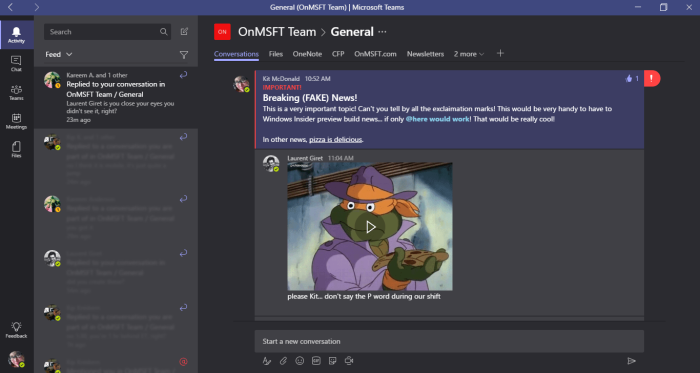Microsoft Teams to allow retention policies, rolling out now
3 min. read
Published on
Read our disclosure page to find out how can you help Windows Report sustain the editorial team Read more

In a pickle, choosing between which chat communication solutions best fit your work environment?
Perhaps Microsoft could tempt you with the inclusion of Teams retention policies being included in Office 365 security and compliance center.
Yesterday, the Office team began rolling out the retention policies to Office 365’s security compliance center and estimate the full breadth of the release should be concluded within the next few weeks.
What does this mean for your average admin in charge of maintaining the office’s communication platforms?
- What are retention policies for Teams?
For most organizations, the volume and complexity of their data is increasing daily – email, documents, Teams messages, and more. To manage or govern this information is important for admins need to:Comply proactively with industry regulations and internal policies that require organizations to retain content for a minimum period – for example, the Sarbanes-Oxley Act might require you to retain certain types of content for seven years. - Reduce their risk in the event of litigation or a security breach by permanently deleting old content that organizations are no longer required to keep.
- Help organizations share knowledge effectively and be more agile by ensuring that their users work only with content that’s current and relevant to them.
With a Teams retention policy, you can:
- Decide proactively whether to retain content, delete content or both – retain and then delete the content based on time.
- Use the SCC Policy creation user experience or Teams Retention PowerShell cmdlets
- Set different retention durations for Teams Chats v/s Teams Channel Messages.
- Target the entire organization with these location rows and target specific users (for Teams chat retention) and specific
- Teams (For Teams channel message retention)
- Use retention policies with the SharePoint & OneDrive location rows to address the Files in Teams.
In addition, IT Admins can choose what to do with content in chats, whether it be retaining or deleting, use the eye-friendly SCC policy creation center to create rules and guidelines, schedule different retention durations, target entire departments using location rows and location rows to establish retention policies for Sharepoint and One drive folders.
Once again, the update is currently rolling out, but for those interested, there are some FAQ sheets to mull over, here. Microsoft seems to be pouring a lot of resources into Teams to help it catch up in the market while also being competitive with current offerings. The company has eDiscovery of calls and meetings planned for Teams, as wells as implementing Data Prevention of conversations and files found in Teams as well addressing the current round of feedback and audit logs for the month.








